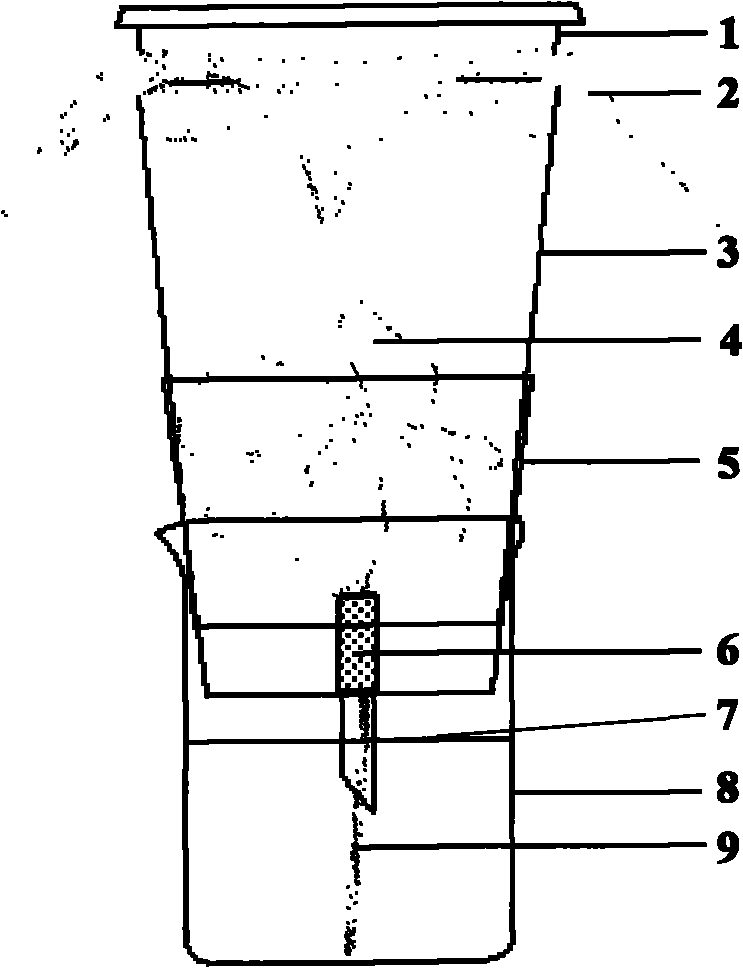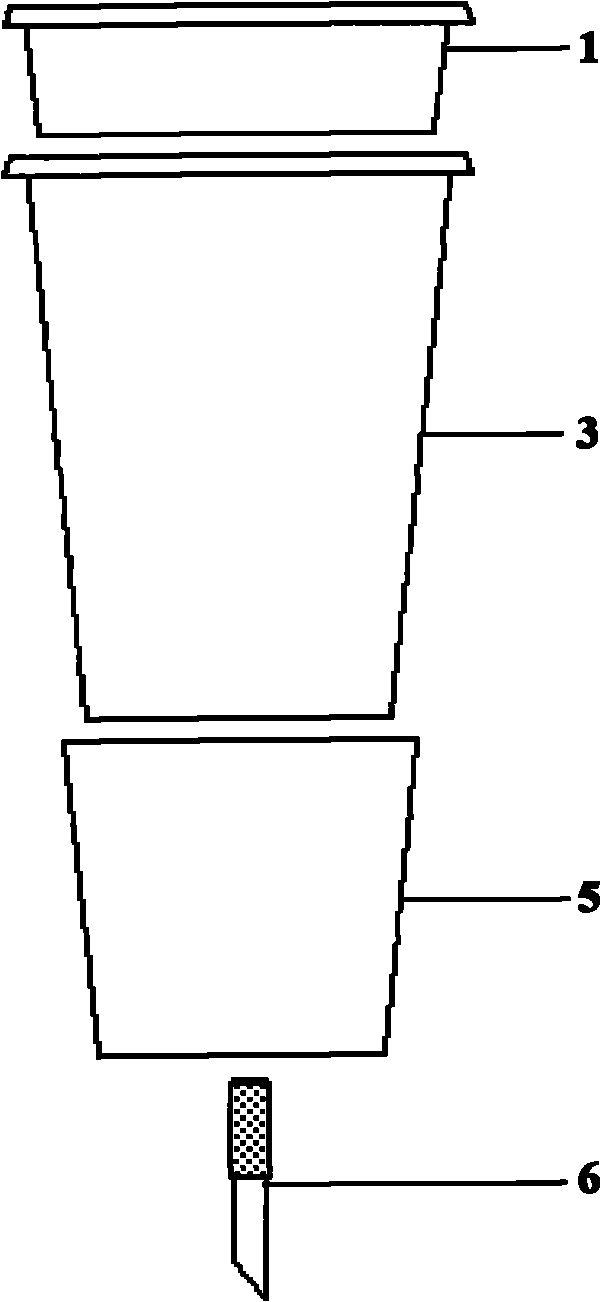Tetranychina harti feeder
A technology for sorrel and breeding room, which is applied in the field of entomology experiments, can solve the problems of easy sticking of feces, unnatural posture, affecting lifespan and nutrition, etc., and achieves convenient microscopic observation and replacement, and is not easy to turn yellow and moldy. , Easy to disassemble and assemble
- Summary
- Abstract
- Description
- Claims
- Application Information
AI Technical Summary
Problems solved by technology
Method used
Image
Examples
Embodiment Construction
[0018] The making and using method of example shown in accompanying drawing are as follows:
[0019] Production of the main parts of the breeding room: Take a disposable plastic water cup (bottom diameter 45mm, upper inner diameter 66.5mm, height 100mm), cut the upper part 20mm and the lower part 60mm high respectively as the cover ring (1) and the bottom of the breeding room Cup (5); Get 1 plastic cup in addition, remove the bottom, leave most (high 90mm) as the cover cylinder (3) of feeding room; Cut out the square gauze piece that side length is 105mm as the feeding room from the large piece of gauze Gauze cover (2); cut a 35mm long section from the drinking straw with a diameter of 5mm, wrap a circle of double-sided adhesive tape at one end, wrap gauze on the outside, and cut the other end into an inclined plane to form a handle pipe (6); Drill a round hole with a diameter slightly larger than 5mm in the bottom center of the bottom cup (5) of the feeding room, and then ins...
PUM
 Login to View More
Login to View More Abstract
Description
Claims
Application Information
 Login to View More
Login to View More - R&D
- Intellectual Property
- Life Sciences
- Materials
- Tech Scout
- Unparalleled Data Quality
- Higher Quality Content
- 60% Fewer Hallucinations
Browse by: Latest US Patents, China's latest patents, Technical Efficacy Thesaurus, Application Domain, Technology Topic, Popular Technical Reports.
© 2025 PatSnap. All rights reserved.Legal|Privacy policy|Modern Slavery Act Transparency Statement|Sitemap|About US| Contact US: help@patsnap.com



